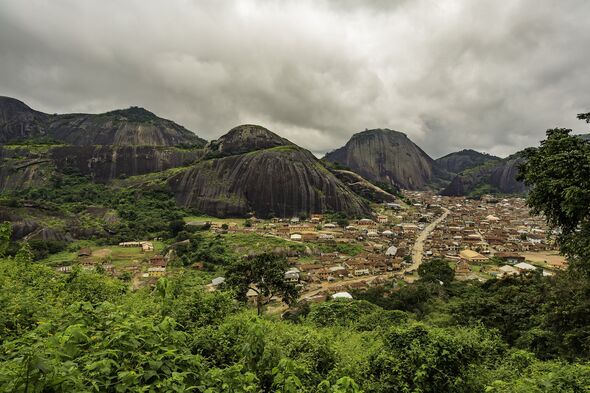The African continent is home to some of the largest countries in the world including Algeria, Sudan and the DRC.
Nigeria is found on the western coast of the continent – bordering Niger, Chad, Cameroon, Benin and the Atlantic Ocean – and is home to a diverse geography ranging from deserts and plains to mountains, swamps and even jungles.
With a total area of 356,667 square miles, Nigeria is often called the “Giant of Africa” due to its large land area, diverse people and languages, and huge population.
Its territory is so vast that countries like Belgium, the Netherlands and even the UK could simultaneously fit inside its borders. Belgium is about 30 times smaller than Nigeria, at just 11,800 square miles.
Recent estimates have put the total at an impressive 228.1 million, making it the most populous country in Africa. Nigeria is expected to become the world’s third most populated country by 2050, surpassing the US and eventually surpassing China by 2100.
Nigeria is comprised of 36 states, the largest of which is Lagos, which was the chief port and capital until December 1991. Home to around 15 million residents, Lagos retains its standing as the country’s leading commercial and industrial hub.
The federal capital, Abuja, lies in the centre of the country around 300 miles northeast of Lagos and was built during the 1980s on the grass-covered Chukuku Hills.
Its location was chosen due to its cooler and less humid climate, easy accessibility, and land availability for future expansion.
It is home to around four million people, compared to just 19,000 in 1950.
Modern Nigeria was founded in 1914 when the British Protectorates of Northern and Southern Nigeria were joined. The country became independent in 1960 and adopted a republican constitution three years later. It did, however, elect to stay a member of the Commonwealth.
Its official language is English, although over 525 native languages are spoken.
Nigeria is generally made of plains in the north and south, with plateaus and hills in its centre. The Sokoto Plains lie in the northwestern corner, while the Borno Plains in the northeast extend as far as the Lake Chad basin.
The Jos Plateau rises in the country’s centre and is dotted by extinct volcanoes. The mountainous area along Cameroon’s southeastern border boasts the country’s highest points, including Chappal Waddi at 2,419 metres in the Gotel Mountains.
Nigeria also has one of the largest river systems in the world, including the Niger Delta, which is the third-largest delta on Earth. The Niger River – for which the country is named – and the Benue, its largest tributary, are the principal rivers. While the Niger has many rapids and waterfalls, the Benue is navigable throughout its length, except during the dry season.
Camels, antelopes, hyenas, lions, baboons, and giraffes once inhabited the entire savanna region, while red river hogs, forest elephants, and chimpanzees lived in the rainforest belt. Animals found in both landscapes included leopards, golden cats, monkeys and gorillas.
Today, these animals can only be found in protected places like the Yankari National Park due to hunting and habitat destruction.
Nigeria has a tropical climate with variable rainy and dry seasons, depending on location. It is hot and wet most of the year in the southeast but dry in the southwest and farther inland. In the south, the rainy season lasts from March to November, whereas in the far north, it lasts only from mid-May to September.
